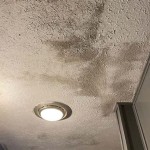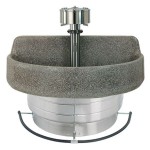What Type of Paint Should I Use To Paint a Bathroom Vanity?
Transforming a bathroom vanity with a fresh coat of paint is a simple and budget-friendly way to update the space. However, the bathroom environment presents unique challenges for paint, requiring specialized formulations to withstand moisture, humidity, and frequent cleaning. Choosing the right paint for your bathroom vanity ensures a durable and long-lasting finish that can withstand the rigors of daily use.
1. Selecting the Right Paint Type
The key to successful bathroom vanity painting is to ensure the chosen paint is specifically designed for high-moisture environments. This typically means opting for a paint labeled as "bathroom paint," "kitchen and bath paint," or "alkyd-based enamel paint." These formulations offer enhanced resistance to mildew, moisture, and scrubbing, making them ideal for the humid and frequently cleaned bathroom environment.
While latex-based paints are popular and easy to apply, they are generally not the best choice for bathrooms. While some latex paints are advertised as "bathroom paints," they may not offer the same level of durability and moisture resistance as alkyd-based enamels. These enamels, known for their hard, glossy finish, provide excellent protection against moisture and cleaning agents, making them the preferred option for bathroom vanities.
2. Exploring Paint Finishes
The choice of paint finish influences the final look and feel of the vanity. Different finishes offer specific benefits, and understanding these differences can help you choose the best option for your bathroom:
- Matte: Matte finishes offer a subtle, velvety appearance, but they are prone to showing imperfections and may be more difficult to clean. They are not the most suitable choice for bathroom vanities due to their susceptibility to stains and wear.
- Eggshell: Eggshell paints are a slight step up from matte, providing a subtle sheen while retaining a soft appearance. They offer better stain resistance and are easier to clean than matte finishes, making them a decent compromise for bathroom vanities.
- Satin: Satin finishes offer moderate sheen and are known for their practicality. They offer good stain resistance and are easy to clean, making them a popular choice for bathroom vanities.
- Semi-gloss: Semi-gloss paints offer a noticeable sheen, enhancing the look of the vanity and making it easier to clean. They are a good option for bathroom vanities where durability and easy cleaning are priorities.
- Gloss: Gloss paints have the highest shine level, providing a sleek and durable finish. They offer excellent stain resistance and are the easiest to clean amongst all finishes. However, gloss finishes may highlight imperfections on the surface and can appear too reflective for some bathroom styles.
The ideal finish for a bathroom vanity depends on personal preference and the overall style of the bathroom. If you prefer a clean and durable finish, satin or semi-gloss are excellent choices. If your bathroom is more traditional, an eggshell finish can provide a softer look while still offering some protection.
3. Preparing the Vanity for Painting
Proper preparation is crucial for obtaining a long-lasting and professional-looking paint job. The process involves several steps:
- Remove all hardware: This includes knobs, handles, hinges, and any other attachments.
- Clean the vanity thoroughly: Use a mild detergent to remove any dirt, grime, or existing residue. Ensure the surface is completely dry before proceeding.
- Sand the surface: Sanding the vanity helps create a rough surface, which allows the paint to adhere better. Use fine-grit sandpaper (120-grit) to smooth out any unevenness or imperfections.
- Prime the vanity: Applying a primer is essential for ensuring the paint adheres properly and provides a smooth, even finish. Choose a primer specifically designed for bathroom use.
Once the preparation is complete, you can apply the chosen paint in thin, even coats. Allow each coat to dry completely before applying the next. For optimal durability, consider applying at least two coats of paint.
Remember that choosing the right type of paint, exploring different finishes, and preparing the surface meticulously are key to achieving a professional-looking and long-lasting paint job on a bathroom vanity. By following these steps, you can transform the vanity and enhance the overall style and functionality of your bathroom.

How To Paint Bathroom Cabinets Without Sanding 8 Vital Steps Grace In My Space

How To Paint Cabinets Last Painting A Bathroom Vanity Maison De Pax

How To Paint Bathroom Vanity Cabinets Tutorial Benjamin Moore

How To Paint A Bathroom Vanity Love Remodeled

How To Paint Bathroom Vanity Cabinets Tutorial Benjamin Moore

Paint Bathroom Vanity Countertop Sink So Easy A Piece Of Rainbow

How To Paint Laminate Cabinets Love Renovations

How To Paint A Bathroom Vanity Helpful Tips Calypso In The Country
.jpg?strip=all)
Painting A Bathroom Vanity Again Dream Green Diy

Paint Bathroom Vanity Countertop Sink So Easy A Piece Of Rainbow
Related Posts







